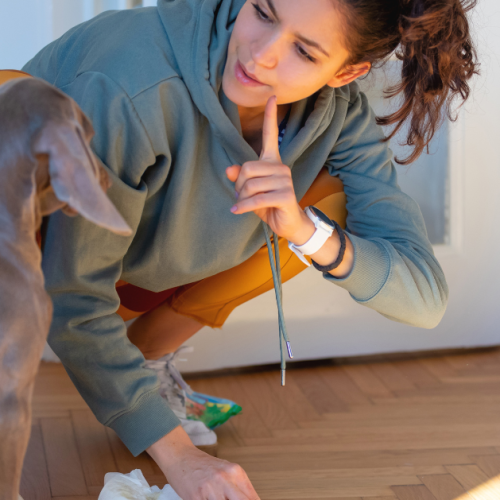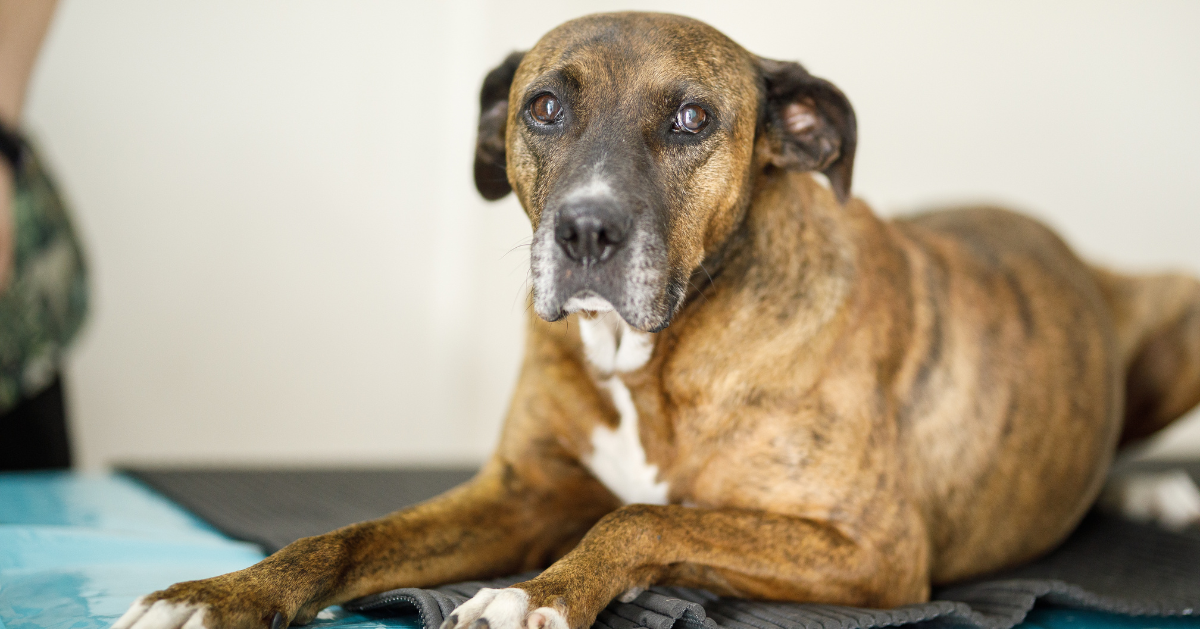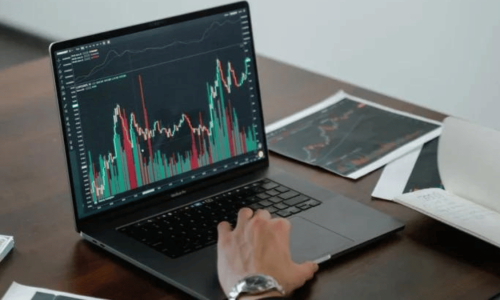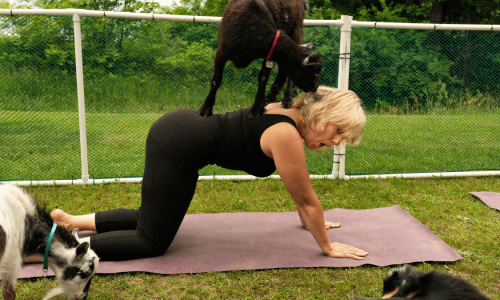Parvovirus is a big worry for dog owners, especially if you have an older pup. Known as Parvo, this highly contagious virus is usually associated with puppies, but it can affect older dogs too. Even with advances in veterinary care, senior dogs with potentially weaker immune systems are still at risk.
In this article, we’ll explore what Parvo is, how it can affect older dogs, and the steps you can take to keep your furry friend safe. We’ll cover how Parvo spreads, the symptoms to look out for, and preventive measures to help ensure your older dog’s health and well-being.
Related Post: What Can I Spray to Keep My Dog from Peeing Indoors?

Table of Contents
ToggleWhat Is Parvo in Dogs?
Imagine your furry friend, a happy-go-lucky pup, suddenly feeling under the weather. It’s a scary thought, isn’t it? Well, one of the nastiest illnesses that can affect dogs is called parvo. It’s like a really bad stomach bug, but even worse.
Parvo is caused by a super contagious virus. It can spread quickly from dog to dog, especially if they’re in contact with each other’s poop or even just the places where they’ve been. This virus is tough and can survive on surfaces for a long time, making it easy for unsuspecting pups to pick up.
When a dog gets parvo, they might start feeling sick with vomiting, diarrhea, and a loss of appetite. In some cases, the virus can even affect their heart. It’s especially dangerous for puppies, whose bodies are still growing and developing.
The good news is that there’s a way to protect your dog from parvo: vaccinations. These shots are like a superhero shield, helping your dog’s body fight off the virus. Even if your dog is older, it’s still important to keep their vaccinations up-to-date.
So, if you’re a dog owner, remember to keep an eye out for any signs of illness and make sure your furry friend is always protected with vaccinations. A healthy and happy dog is the best kind of dog!

What Are Signs of Parvo in Older Dogs?
Signs of parvo in older dogs are similar to those in younger dogs, though older dogs might present with slightly less severe symptoms depending on their overall health and immune system strength. Key symptoms to watch for include:
- Vomiting: frequent and possibly severe.
- Diarrhea: Often severe and may contain blood.
- Lethargy: Lack of energy and interest in surroundings.
- Loss of appetite: refusal to eat or reduced interest in food.
- Dehydration: This can occur rapidly due to vomiting and diarrhea.
- Fever: elevated body temperature.
- Weakness: general physical weakness and inability to stand or walk normally.
Dog owners must recognize these signs early. Parvo is a serious condition that requires immediate veterinary attention, especially in older dogs, as their recovery might be more complicated due to potential pre-existing health conditions. Early detection and treatment can significantly improve the chances of recovery.
What are the possibilities for an Old Dog to Get Parvo?
Older dogs can get parvovirus, just like puppies. The risk varies based on several factors. If an older dog isn’t fully vaccinated, it’s more likely to catch Parvo. Aging can weaken a dog’s immune system, making it more prone to infections, including Parvo. Additionally, dogs that live in areas where Parvo is common or interact with unvaccinated dogs face a higher risk.
Symptoms of Parvo are similar in all dogs, but they might be more severe or harder to spot in older dogs with existing health issues. Poor hygiene and sanitation can also increase the risk, as the virus can linger on surfaces for a long time. Some breeds may be more vulnerable, but Parvo can affect any dog.
How Is Parvovirus Diagnosed in Dogs?
Parvovirus in dogs is diagnosed through a combination of clinical signs and specific diagnostic tests. Here’s how veterinarians typically diagnose parvovirus in dogs:
1. Clinical Evaluation
The vet will start with a thorough clinical evaluation, including a detailed history of the dog’s symptoms and vaccination records. Symptoms such as severe vomiting, bloody diarrhea, lethargy, and loss of appetite can suggest parvovirus, especially in unvaccinated dogs or those with unknown vaccination history.
2. Fecal Antigen Test
The most common diagnostic test for parvovirus is a fecal antigen test, also known as a Parvo SNAP test. This test can detect the presence of parvovirus in the dog’s feces within minutes. It’s highly specific and sensitive, but false negatives can occur, especially if the test is done very early after infection or in the presence of very high levels of the virus.
3. Polymerase Chain Reaction (PCR) Test
A PCR test can detect the DNA of the parvovirus in feces, blood, or other tissues. This test is more sensitive than the fecal antigen test and can detect the virus even in the early stages of the infection. However, it’s more expensive and results may take longer to obtain.
4. Blood Tests
While not specific to parvovirus, blood tests can provide supportive information. They can show a decrease in white blood cell count (leukopenia), which is common in dogs with parvovirus. Blood tests can also help assess the severity of dehydration and electrolyte imbalances.
5. Other Diagnostic Tests
In some cases, additional tests may be necessary to rule out other causes of the dog’s symptoms or to assess the overall health and organ function of the dog, especially if hospitalization and intensive treatment are needed.
If you suspect your dog has been exposed to parvovirus or is showing symptoms, it’s essential to contact your veterinarian immediately.
Treatment and Management of Parvovirus in Older Dogs
The treatment and management of parvovirus in older dogs, like in puppies, primarily focuses on supportive care, as there is no direct cure for the virus itself. The goal is to support the dog’s body and immune system to fight off the virus. Here are the main components of treatment and management for parvovirus in older dogs:
1. Hospitalization
Older dogs with parvo often require hospitalization to receive comprehensive care and constant monitoring. This is especially true for dogs that are severely dehydrated or experiencing significant symptoms.
2. Fluid Therapy
Dehydration and electrolyte imbalances are common in dogs with parvo due to vomiting and diarrhea. Intravenous (IV) fluid therapy is crucial to replace lost fluids, correct electrolyte imbalances, and prevent or treat shock.
3. Nutritional Support
Affected dogs may not want to eat, so nutritional support is important. This may include IV nutrition (parenteral nutrition) or feeding tubes if necessary, to ensure the dog receives adequate nutrition to support its immune system and recovery.
4. Anti-Nausea Medication
To control vomiting, anti-nausea medications (antiemetics) are often administered. This can help the dog retain more fluids and nutrients.
5. Antibiotics
While antibiotics do not fight the virus itself, they are used to prevent or treat secondary bacterial infections, which can be a complication of parvovirus.
6. Pain Management
If the dog is in pain, especially from severe gastrointestinal symptoms, pain relief medications may be provided under veterinary supervision.
7. Close Monitoring
Continuous monitoring of vital signs, hydration status, and overall health is essential to adjust treatment plans as the dog’s condition evolves.
8. Isolation
To prevent the spread of the virus to other dogs, isolation from other pets is necessary until the dog is no longer contagious.
9. Vaccination and Preventive Measures
Once an older dog has recovered from parvo, future preventive measures, including vaccination, are crucial to prevent reinfection. Discuss with your vet the best vaccination schedule, as the dog’s recent illness may affect the timing.
Recovery from parvovirus can be a slow process, requiring patience and attentive care. The prognosis for older dogs can vary based on the dog’s overall health, the severity of symptoms at the time of diagnosis, and how quickly treatment was initiated. Regular follow-up with a veterinarian is essential to monitor recovery and manage any long-term effects of the illness.
(FAQs) about parvovirus in older dogs:
Q: How can I disinfect my home if my dog has parvovirus?
A: Use strong disinfectants like bleach to clean all areas your dog has been in contact with. Parvovirus is resilient and can survive on surfaces for months, so thorough cleaning is essential.
Q: Can older dogs get parvovirus?
A: Yes, older dogs can contract parvovirus, although it is more commonly seen in puppies. A weakened immune system, lack of vaccination, or exposure to infected dogs increases their risk.
Q: What are the symptoms of parvovirus in older dogs?
A: Symptoms include severe diarrhea, vomiting, loss of appetite, and lethargy. In older dogs, these symptoms can be more severe and harder to recognize due to other existing health issues.
Q: How can I protect my older dog from parvovirus?
A: Ensure your dog is up-to-date on vaccinations. Avoid exposing your dog to areas with high parvovirus incidence or unvaccinated dogs, and maintain good hygiene in your dog’s environment.
Q: What should I do if I suspect my older dog has parvovirus?
A: Contact your veterinarian immediately. Early diagnosis and treatment are crucial. Your vet will conduct tests and may recommend supportive care such as fluids and medications.
Q: How is parvovirus treated in older dogs?
Treatment primarily focuses on supportive care, including fluid therapy to prevent dehydration and medications to manage symptoms. Hospitalization may be required for severe cases.
Q: How long does parvovirus last in older dogs?
A: The duration of illness can vary, but with prompt and appropriate treatment, many dogs start to improve within a week. The virus itself can be present in the environment for several months, so thorough cleaning is important.
Q: Can parvovirus be prevented in older dogs?
A: Yes, vaccination is the best prevention method. Ensure your older dog receives regular booster shots as recommended by your vet. Maintaining good hygiene and avoiding high-risk areas also helps.










